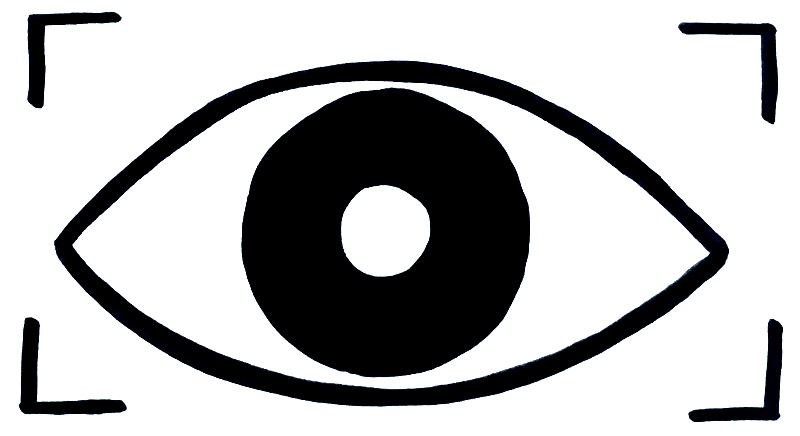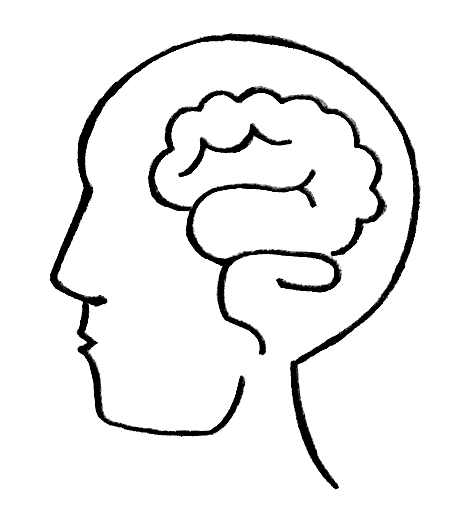Does the body matter?
It’s all about categories and stereotypes

Person perception is all about how we process information and form impressions about people.
The way we perceive someone is strongly influenced by the social categories someone belongs to. Gender, ethnicity, age, social class and religion are all examples of social categories. Belonging to a social category means sharing certain characteristics or common traits with a group of people, but doesn’t necessarily involve interacting with those people on a regular basis.
Yet, social categories are extremely powerful. In fact, when we form a mental image of others, we generally “define” them and make inferences about them in terms of social categories rather than in terms of their unique, individual attributes (e.g. their personality traits).
Why is this?
Less is more

One compelling reason is that thinking in terms of categories is just so much simpler for us. It requires much less cognitive effort. And as human beings (or cognitive misers) we clearly prefer less over more effort.
But, let’s not forget that simplification always comes at a cost: it reduces accuracy in our judgements. That’s precisely why categorising people often leads to stereotyping and prejudice, i.e. making generalised (and oftentimes false) assumptions about a group of people. A common mistake would be for instance to (falsely) assume that every Muslim you encounter must therefore be Islamist too.
But how does the process of person perception actually work?
Automatic vs controlled
In the classical view, categorisation and stereotyping are automatic and unavoidable processes outside of the perceiver’s conscious awareness.
“Because the stereotype has been frequently activated in the past, it is a well-learned set of associations that is automatically activated in the presence of a member (or symbolic equivalent) of the target group.”
Devine and Sherman (1989, p.6)
And because gender, ethnicity and age are visually readily available when one encounters a novel person, automaticity seems to be particularly valid for this set of categories.

More recent research accounts argue instead that categorisation may be controllable under certain conditions. Stereotypes may or may not be activated depending on the perceiver and his/her actual level of attention (or “cognitive busyness”) when he/she encounters a new person.
Multiple MEs
What is undisputed however is that we all simultaneously belong to multiple social categories. For instance I belong to the category “female” (gender), but at the same time I also belong to the categories “White” (ethnicity), “Austrian” (nationality) and “young adult” (age group) – just to name a few.
In light of the countless categories you can “choose” from, which information will actually become salient (significant) when you draw a mental picture of me?
Time for Theory
There are three different theories on how this might actually be decided:
1) Dominance: This means that although all categories are activated in parallel, only one category comes to dominate perception, while all others are supressed from working memory. This – by the way- is the prevalent belief in literature.
Put simply: When you first see a picture of me, you will probably straightforwardly put me in the “female” category and overlook all other categories I might belong to.
2) Compartmentalisation: Different social categories take turns in playing a dominant role for person perception.
Put simply: Depending on the purpose and context of our encounter (e.g. job interview or date), my education status or my marital status becomes most important to you.
3) Integration: This means that the perceiver integrates all information from different social categories in his/her perception. Information from several categories is either simply added together, or, new stereotypic associations emerge from crossing categories.
Put simply: During a job interview you will combine information on my education status and my age to draw conclusions on my abilities.
Ethnicity and gender overlap
What is known so far is that categories sometimes interact and are “mutually dependent upon one another” (Freeman et al., 2012).
This is the case for ethnicity and gender. Knowing someone’s ethnicity systematically biases our judgements on his/her gender. For instance, Asians are judged to be more stereotypically female and Blacks to be more stereotypically male.
How come? It works in two directions:
1 pre-held beliefs and stereotypes associated with ethnicity and gender substantially overlap. For example: people attribute being communal and soft-spoken both to being female and to being Asian.
2 visual cues (indicators) pertaining to gender and ethnicity substantially overlap. For example: people attribute certain facial features (e.g. wide cheekbones, small nose) both to being female and to being Asian.

So, does the body matter after all?
Let’s reconsider the preceding two sentences and put them into perspective:
What this actually means is that the physical identity of a person plays a crucial role in impression formation. Why?
Because static facial and bodily features, and dynamic facial expressions, body language, posture and gesture all provide important visual and behavioural cues (signals) on the basis of which we form judgements, activate stereotypes and infer personality traits.
Written and published June 2019
by Jessica
List of references I used in this article:
Albright, L., Kelly, D. A., & Malloy, T. E. (1988). Consensus in personality judgments at zero acquaintance. Journal of Personality and Social Psychology. 55 (3): 387–95. doi:10.1037/0022-3514.55.3.387. PMID 3171912.
Allport, G. W. (1954). The nature of prejudice. Reading, MA: Addison-Wesley.
Bargh, J.A. (1997). The automaticity of everyday life. In R.S. Wyer (Ed.), Advances in social cognition (Vol. X, pp. 1–61). Mahwah, NJ: Erlbaum.
Bodenhausen, G V, & Macrae, C N (1998) Stereotype activation and inhibition In R S Wyer, Jr (Ed ), Stereotype activation and inhibition Advances in social cognition (Vol 11, pp 1-52) Hillsdale, NJ Erlbaum
Bodenhausen, G. (2010). Diversity in the person, diversity in the group: Challenges of identity complexity for social perception and social interaction. European Journal of Social Psychology, 40(1), 1-16.
Bodenhausen, G.V., Macrae, C.N., & Garst, J. (1998). Stereotypes in thought and deed: Social-cognitive origins of intergroup discrimination. In C. Sedikides, J. Schopler & C. Insko (Eds.), Intergroup cognition and intergroup behaviour (pp.311-335). Mahwah, NJ: Erlbaum.
Carpinella, C., Chen, J., Hamilton, D., & Johnson, K. (2015). Gendered Facial Cues Influence Race Categorizations. Personality and Social Psychology Bulletin, 41(3), 405-419.
Devine, P., & Sherman, Steven J. (1989). Stereotypes and Prejudice: Their Automatic and Controlled Components. Journal of Personality and Social Psychology, 56(1), 5-18.
Freeman, J. B., Johnson, K. L., Adams, R. B., & Ambady, N. (2012). The social–sensory interface: Category interactions in person perception. Frontiers in Integrative Neuroscience, 6, 1-13.
Gilbert, D., Hixon, J., & Tesser, Abraham. (1991). The Trouble of Thinking: Activation and Application of Stereotypic Beliefs. Journal of Personality and Social Psychology, 60(4), 509-517
Hastie, R., Schroeder, C., & Weber, R. (1990). Creating complex social conjunction categories from simple categories. Bulletin of the Psychonomic Society, 28, 242-247.
Johnson, K., Freeman, J., Pauker, K., & Simpson, Jeffrey. (2012). Race is Gendered: How Covarying Phenotypes and Stereotypes Bias Sex Categorization. Journal of Personality and Social Psychology, 102(1), 116-131.
Macrae, C., & Bodenhausen, G. (2001). Social cognition: Categorical person perception. British Journal of Psychology,92(1), 239-255.
McGarty, C., Mavor, K. I., & Skorich, D. P. (2015). Social categorization. In J. D. Wright (Ed.), International encyclopedia of the social and behavioral sciences (2nd ed., pp. 186–191). New York, NY: Elsevier.
Neumann, E., and Deschepper B. (1992). An Inhibition-Based Fan Effect: Evidence for an Active Suppression Mechanism in Selective Attention. Canadian Journal of Psychology/Revue Canadienne De Psychologie,46(1), 1-40.
Tajfel, H. (1969). Cognitive aspects of prejudice. Journal of Social Issues, 25, 79-97.
Uher, J. (2017). How we judge others’ personality: Gender, ethnicity and questionnaires. LSE Public Lecture, 08.06.2017. Downloaded at https://t.co/Er44Z8R95s.